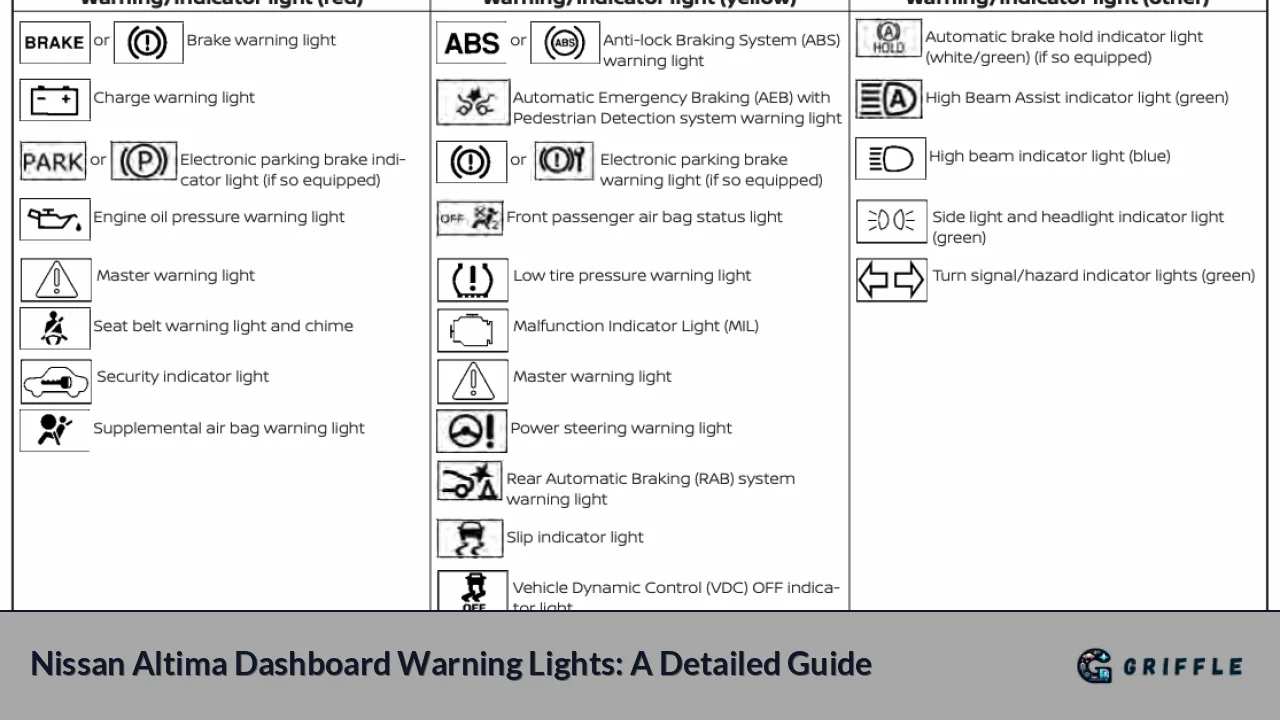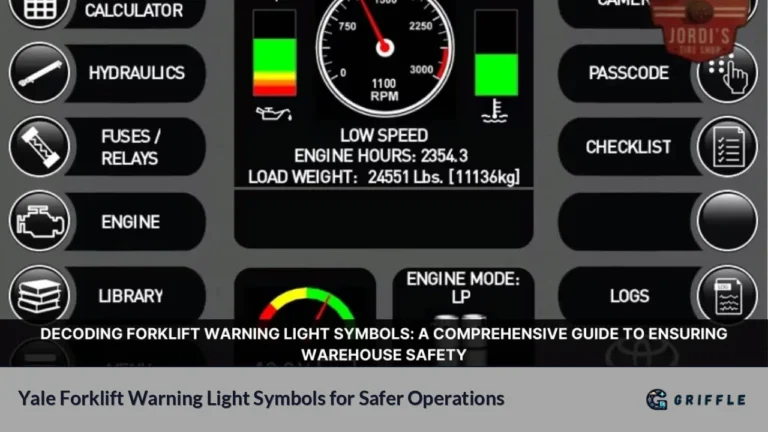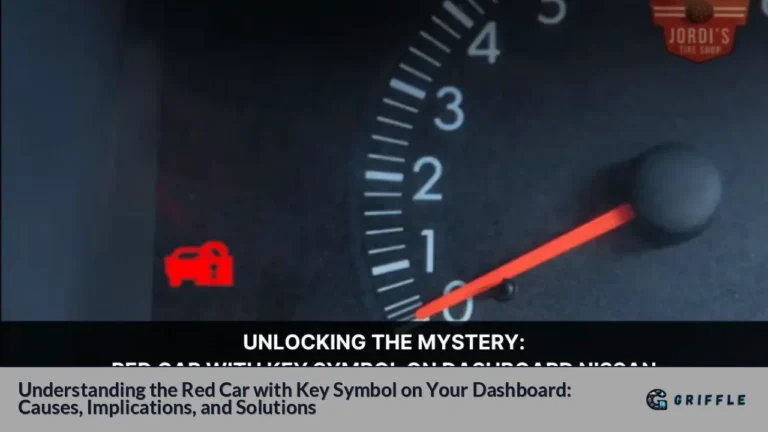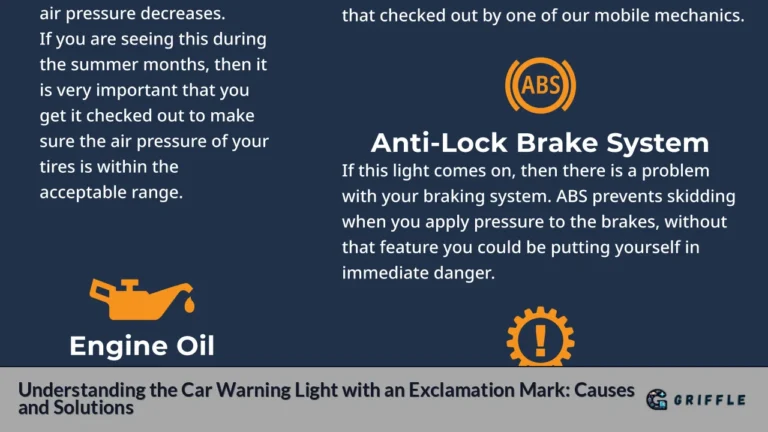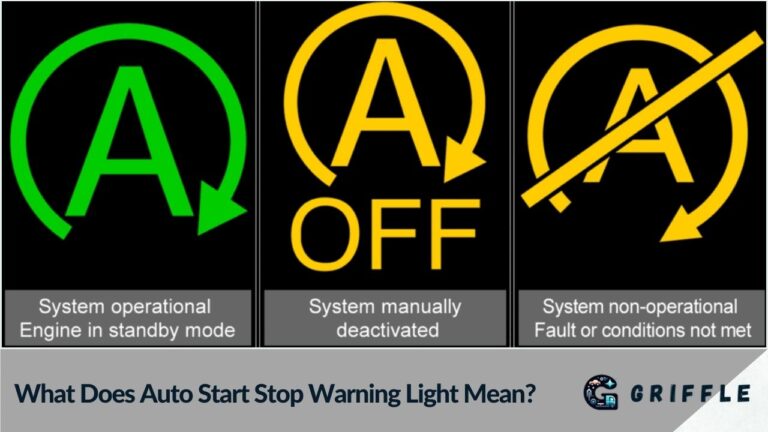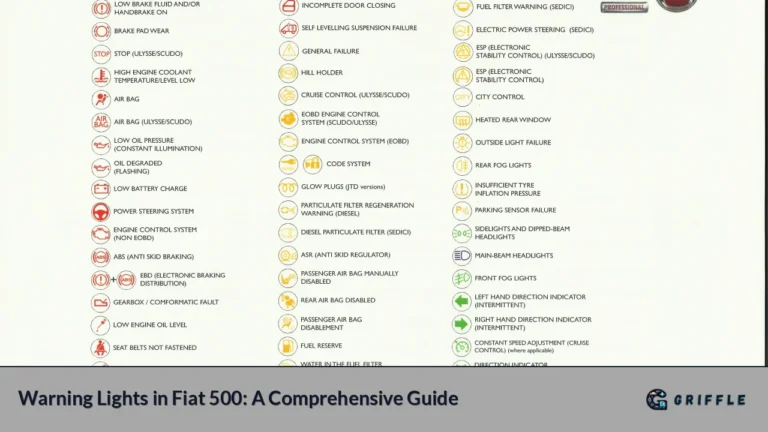The dashboard warning lights in your Nissan Altima serve as critical indicators of your vehicle's health and functionality. Ignoring these lights can lead to severe issues, potentially compromising your safety and resulting in costly repairs. This guide aims to provide a thorough understanding of the various warning lights you may encounter, their meanings, and the appropriate actions to take when they illuminate. By being informed, you can ensure your Altima remains in optimal condition and avoid unnecessary stress on the road.
Common Dashboard Warning Lights
Below is a table summarizing some of the most common dashboard warning lights found in the Nissan Altima, along with their meanings and recommended actions.
| Warning Light | Meaning | Recommended Action |
|---|---|---|
| Check Engine Light | Indicates a potential issue with the engine or emissions system. | Consult a technician immediately. |
| Oil Pressure Warning Light | Signals low oil pressure, which can cause engine damage. | Pull over safely and check oil levels. |
| Brake Warning Light | May indicate low brake fluid or an issue with the brake system. | Check brake fluid levels; seek service if light persists. |
| Tire Pressure Monitoring System (TPMS) Light | Indicates that one or more tires are under-inflated. | Check tire pressures immediately. |
| Battery Charge Warning Light | Indicates a problem with the vehicle's charging system. | Have the battery and charging system checked promptly. |
| ABS Warning Light | Indicates a malfunction in the anti-lock braking system. | Inspect the ABS system as soon as possible. |
| Airbag Warning Light | Signals an issue with the airbag system. | Have the airbag system checked immediately for safety. |
The Importance of Dashboard Lights
Understanding dashboard warning lights is crucial for several reasons:
- Safety: Many warning lights relate directly to safety systems, such as brakes and airbags. Ignoring them can lead to dangerous situations.
- Preventive Maintenance: Early detection of issues through dashboard alerts can prevent more severe problems down the line, saving you both time and money.
- Vehicle Longevity: Regular attention to warning lights helps maintain your vehicle's overall health, extending its lifespan.
Detailed Breakdown of Common Warning Lights
Check Engine Light
The Check Engine Light (CEL) is one of the most recognized symbols on any vehicle dashboard. It typically appears as an engine icon.
- What It Means: The CEL indicates that there is a problem with the engine or emissions system. This could range from a loose gas cap to more serious issues like engine misfires or sensor failures.
- Recommended Action: If this light illuminates, it’s essential to have your vehicle diagnosed by a professional technician. Continuing to drive with this light on can lead to significant damage and costly repairs.
Oil Pressure Warning Light
The Oil Pressure Warning Light, often depicted as an oil can, signals that your engine's oil pressure is low.
- What It Means: Low oil pressure can indicate a leak, low oil level, or a failing oil pump.
- Recommended Action: If this light comes on while driving, pull over safely and turn off the engine. Check your oil level immediately; if it’s low, add oil as necessary. If the light persists after adding oil, consult a technician right away.
Brake Warning Light
The Brake Warning Light usually appears as an exclamation mark within a circle or simply states "BRAKE."
- What It Means: This light can indicate several issues, including low brake fluid levels or that the parking brake is engaged.
- Recommended Action: If this light comes on while driving, first check if your parking brake is engaged. If it isn’t, inspect your brake fluid levels and schedule service if necessary.
Tire Pressure Monitoring System (TPMS) Light
The TPMS Light looks like a flat tire with an exclamation mark inside it.
- What It Means: This light indicates that one or more tires are under-inflated or that there’s an issue with the TPMS itself.
- Recommended Action: Check your tire pressures immediately and inflate them to the recommended levels. If the light remains on after adjusting tire pressures, have the TPMS checked by a professional.
Battery Charge Warning Light
The Battery Charge Warning Light, represented by a battery icon, alerts you to potential issues within your vehicle's electrical system.
- What It Means: This could indicate problems with the battery itself, alternator issues, or corroded battery terminals.
- Recommended Action: If this light comes on while driving, have your vehicle’s electrical system inspected promptly to avoid being stranded due to battery failure.
ABS Warning Light
The ABS Warning Light, marked by "ABS," indicates issues with your vehicle's anti-lock braking system.
- What It Means: While your brakes may still function normally without ABS, this light signifies that the anti-lock braking feature may not engage during hard braking situations.
- Recommended Action: If this light illuminates, have your ABS inspected as soon as possible to ensure safe braking performance.
Airbag Warning Light
The Airbag Warning Light, often depicted as a seated passenger with an airbag symbol, signals potential problems with your airbag system.
- What It Means: This warning indicates that one or more airbags may not function correctly in an accident scenario.
- Recommended Action: Immediate inspection is necessary if this light appears; malfunctioning airbags pose significant safety risks during collisions.
Conclusion
Understanding Nissan Altima dashboard warning lights is essential for maintaining both vehicle performance and driver safety. By recognizing these warnings early and responding appropriately, drivers can prevent minor issues from escalating into major problems. Regular maintenance checks and prompt attention to illuminated warning lights will help ensure that your Altima remains reliable and safe on the road.
FAQs
- What should I do if my Check Engine Light comes on?
If your Check Engine Light illuminates, consult a technician immediately for diagnosis. - How do I reset my Nissan Altima dashboard warning lights?
You should only reset warning lights after addressing the underlying issue; otherwise, consult your owner's manual for specific procedures. - What does it mean if my Brake Warning Light stays on?
A persistent Brake Warning Light indicates low brake fluid or another issue within the braking system; have it checked promptly. - Is it safe to drive with my Tire Pressure Monitoring System (TPMS) light on?
No, driving with low tire pressure can be dangerous; check tire pressures immediately if this light comes on. - When should I seek help for my Battery Charge Warning Light?
If this light illuminates while driving, have your battery and charging system inspected promptly to avoid breakdowns.
